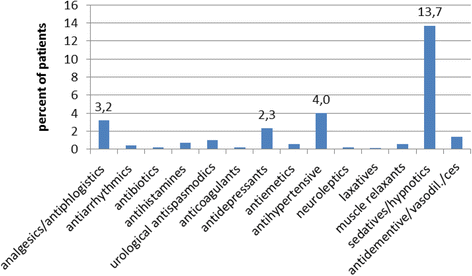Why do family doctors prescribe potentially inappropriate medication to elderly patients?
- PMID: 27449802
- PMCID: PMC4957869
- DOI: 10.1186/s12875-016-0482-3
Why do family doctors prescribe potentially inappropriate medication to elderly patients?
Abstract
Background: Based on changes in pharmacokinetics and -dynamics in elderly patients, there are potentially inappropriate medications (PIM) that should be avoided in patients aged ≥ 65 years. Current studies showed prescription rates of PIM between 22.5 and 28.4 % in the primary care setting. The evidence concerning reasons for PIM prescription by FPs is limited.
Methods: This mixed method study consisted of three research parts: 1) semi-standardized content analysis of patients' records, 2) qualitative interviews with FPs using a) open questions and b) selected patient-specific case vignettes and 3) qualitative interviews with FPs' medical assistants. The integration of qualitative interviews was used to explain the quantitative results (triangulation design). PIM were identified according to the German PRISCUS list. Descriptive and multivariate statistical analysis was done using SPSS 22.0. Qualitative content analysis of interviews was used to classify the content of the interviews for indicating pertinent categories. All data were pseudonymously recorded and analyzed.
Results: Content analysis of 1846 patients' records and interviews with 7 related FPs were conducted. Elderly patients [n = 1241, mean age: 76, females: 56.6 %] were characterized in average by 8.3 documented chronic diagnosis. 23.9 % of elderly patients received at least one PIM prescription. Sedatives/hypnotics were the most frequent prescribed PIM-drugs (13.7 %). Mental disorders, gender and number of long-term medication were detected as predictors for the probability of a PIM prescription. Common reported reasons for PIM prescription by FPs concerned limited knowledge regarding PIM, limited applicability of PIM lists in daily practice, lack of time, having no alternatives in medication, stronger patient-related factors than age that influence prescription, own bad experiences regarding changes of medication or refusal of following prescriptions of sedative/hypnotics.
Conclusions: It is essential to see FPs in a complex decision making situation with several influencing factors on their prescribing, including: patient-oriented prioritization, FPs' experiences in daily practice, FPs' knowledge regarding existing recommendations and their trust in it and organizational characteristics of FPs' daily medical practice. These pros and cons of PIM prescription in elderly patients should be considered in FPs' advanced training.
Keywords: Family doctor; Mixed methods; Polypharmacy; Potentially inappropriate medication.
Figures
References
-
- Cherubini A, Oristrell J, Pla X, Ruggiero C, Ferretti R, Diestre G, Clarfield AM, Crome P, Hertogh C, Lesauskaite V, Prada GI, Szczerbinska K, Topinkova E, Sinclair-Cohen J, Edbrooke D, Mills GH. The persistent exclusion of older patients from ongoing clinical trials regarding heart failure. Arch Intern Med. 2011;171(6):550–556. doi: 10.1001/archinternmed.2011.31. - DOI - PubMed
-
- Gurwitz JH, Field TS, Judge J, Rochon P, Harrold LR, Cadoret C, Lee M, White K, LaPrino J, Erramuspe-Mainard J, DeFlorio M, Gavendo L, Auger J, Bates DW. The incidence of adverse drug events in two large academic long-term care facilities. Am J Med. 2005;118(3):251–258. doi: 10.1016/j.amjmed.2004.09.018. - DOI - PubMed
Publication types
MeSH terms
Substances
LinkOut - more resources
Full Text Sources
Other Literature Sources
Research Materials
Miscellaneous


